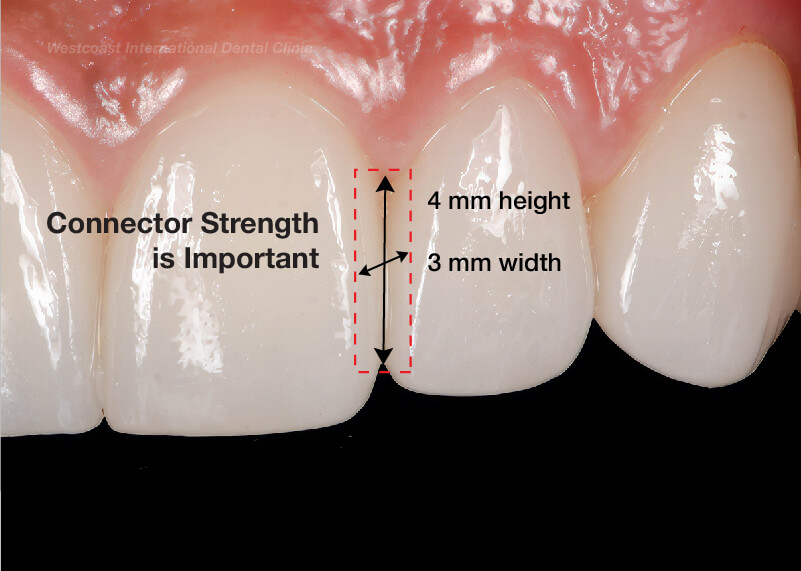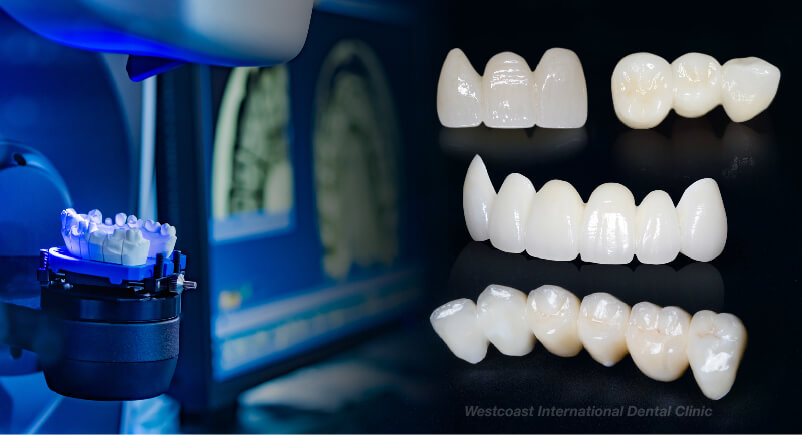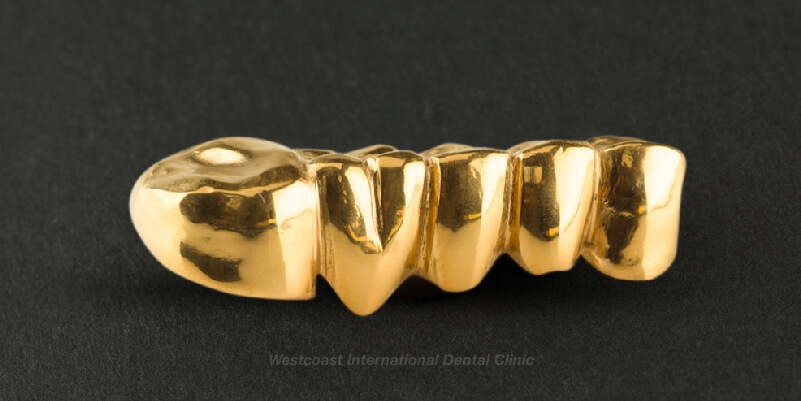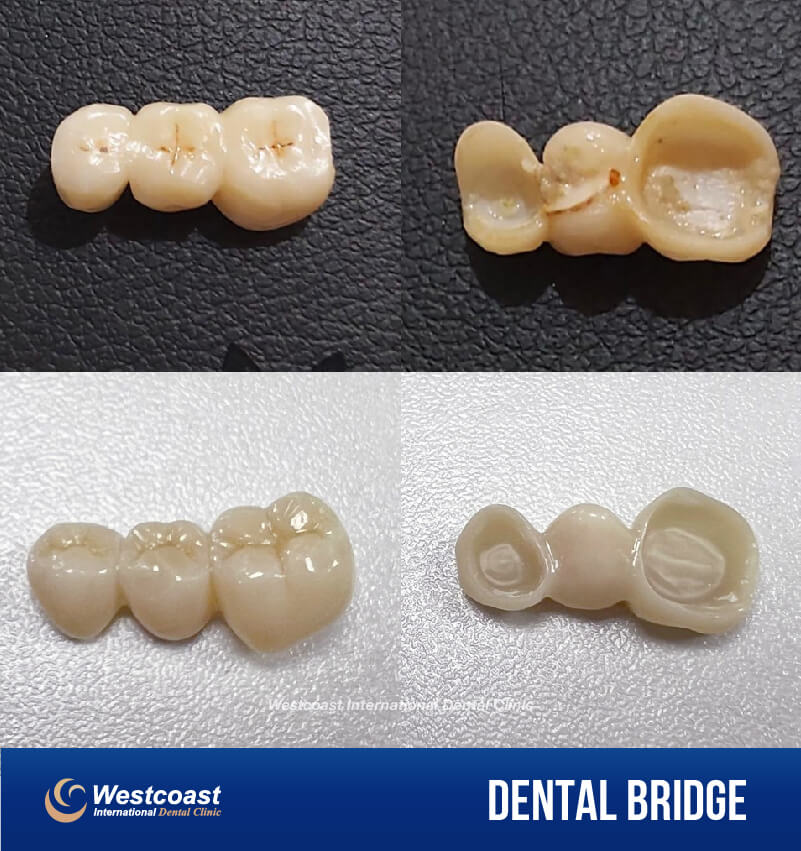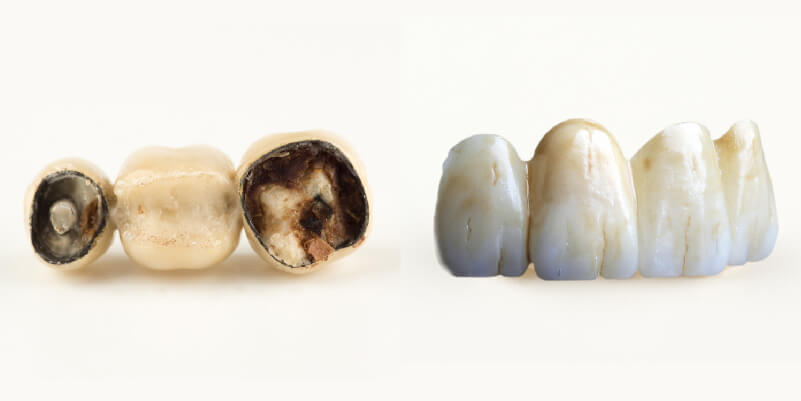Good Dentistry Bridge vs Bad: What Makes the Difference
How Expert Care, Patient Habits, and Material Quality Determine The Success of a Dental Bridge
Choosing between a dentistry bridge and an implant can be daunting. Many patients want to know which option will last longer. While dentists often recommend implants for their durability, a well-designed dentistry bridge can also last a lifetime—if done right. That depends on three key factors: the patient’s habits, the dentist’s technique, and the quality of lab work and materials.
Dentistry Bridge - Patient Factors
A bridge’s longevity starts with daily care. Brushing and flossing must become part of a consistent oral hygiene routine. Poor cleaning lets plaque collect and rot the teeth near the bridge. Cavities can completely weaken the support teeth. The bridge can also collapse as a result.
Diet plays a significant role. Consuming sugary treats and acidic foods can erode the enamel, weakening it over time. Decay typically initially starts along the bridge’s fine edges. Chewing hard items—such as ice or tough meats—adds excessive force. Over time, this leads to fractures.
Another problem arises with teeth grinding and clenching. Known as bruxism, this habit puts immense pressure on the dentistry bridge and surrounding teeth. Patients who grind at night should wear a custom night guard. Adopting this straightforward step can help prolong the durability of this dental procedure.
Skipping regular dental visits is also a major risk. Dentists detect early warning signs, such as marginal gaps or enamel erosion. If patients ignore these signs, they allow minor problems to develop into major failures. People with few remaining teeth often request bridges to fill large gaps, but this can strain the support teeth. A thorough assessment will show whether the patient has enough healthy teeth to support a dentistry bridge.
Dentistry Bridge - Dentist Factors
Not every dentist prepares a bridge with equal care. Crafting a long-lasting dentistry bridge requires advanced skill. A dentist must shape the support teeth—also called abutments—with a precise six-degree taper. This specific angle ensures the bridge seats snugly and retains stability through natural friction.
Margins around the tooth must be smooth and refinable. The crown sits tight against the tooth along a thin edge. If that edge stays rough or uneven, bacteria build up fast and cause decay.
The dentist must also assess nerve proximity. Removing too much enamel risks nerve exposure, which leads to pain or the need for root canal treatment. The depth and position of the preparation depend on experience and anatomy. It may sit above the gum line or extend below it.
Bite alignment matters just as much. A dentistry bridge cannot succeed if an opposing tooth hits it with excessive force. The dentist needs to evaluate and possibly reshape those opposing teeth to create a harmonious bite.
Before beginning treatment, the dentist should assess the entire dental environment. Strong support teeth, healthy roots, and balanced bite forces create the foundation for success. The dentist needs to review X-rays and assess the length and width of the roots. The dentist must check if the connectors can withstand biting force. This planning stage guides decisions about materials, design, and risk management.
The dentist must explain risks at each stage. Informed patients make better choices and follow care instructions carefully.
Laboratory and Material Factors For Dentistry Bridge
Modern dental labs help make bridges succeed. A dentist’s work covers only part of the process. The lab must design a structure that fits precisely—down to 25 microns or less. Oversized or loose bridges can tightly trap plaque and lead to irritation. A snug fit keeps the bridge strong, stable, and long-lasting.
Connectors—the parts linking each false tooth—must have enough thickness and strength. Undersized connectors become weak points that snap under pressure. The outer surface must also be highly polished. A gritty surface will grind down the opposing teeth every time you chew.
Full-milled zirconia is now the most popular material for dentistry bridges. It’s durable, white, and fabricated from a single block. Unlike layered ceramics, it doesn’t separate or chip easily. For front teeth, however, some dentists apply a ceramic veneer to enhance aesthetics. While more beautiful, this layer can break off over time.
In some cases, dentists still choose metal substructures. Long-span dentistry bridges often require more strength than zirconia can provide. Cobalt-chromium, gold, or titanium frames offer excellent durability. An all-gold bridge, with no ceramic overlay, resists wear and cracks. Titanium provides a light but strong base.
Despite their benefits, metal bridges cost more and take longer to produce. That’s why most clinics favour full-milled zirconia—it balances strength, beauty, and affordability. Still, labs must polish it with precision. Rough zirconia scrapes and wears down the teeth it touches.
Effective collaboration between dentist and lab is essential. The dentist must take accurate impressions and provide clear instructions. The lab then follows these specifications to design a dentistry bridge that integrates smoothly into the patient’s bite. When both parties communicate well, the result lasts longer and feels more natural.
Dentistry Bridge with Westcoast Dental Clinic
How Westcoast Fixed a Failing Bridge
A patient came to Westcoast International Dental Clinic after receiving a bridge elsewhere. Her complaint: the bridge kept falling off. She had returned to her previous dentist three or four times. Each time, he re-cemented it and sent her away without further evaluation.
When we examined the bridge, the issues were obvious. The preparation was far too shallow. The bridge had very little surface to grip onto, so it relied entirely on cement for retention. Even perfect cement work won’t hold under those conditions.
We also discovered a critical design flaw. The underside of the false tooth was oddly U-shaped, catching food easily. This shape allowed debris to collect and decay to develop. Left unchecked, this could have destroyed the support teeth.
We developed a brand-new dentistry bridge via use of an entirely different method. First, we evaluated the existing tooth preparation. Ideally, a dentist begins with untouched teeth. That way, the preparation follows a clean, precise path. But in this case, we had to work with the previous dentist’s shallow base.
We reshaped the area carefully. Next – although it was not a perfect situation – we brought the preparation closer to the gum line and gently refined the margins. In doing so, we produced a much better base.
Next, we ensured the two abutment teeth had parallel sides. A proper six-degree taper allows the bridge to sit securely and resist dislodgement. We marked sharp, smooth margins around the teeth using a fine diamond burr. This detail helps the lab achieve an exact fit.
For the impression, we used a traditional technique. While digital methods are available, we find standard impressions still offer the best fit for many cases. After creating the bridge, we polished it to a mirror finish and checked its fit using X-rays six months later. The fit remained perfect.
Side-by-side, the difference was striking. The old dentistry bridge looked mismatched in colour and shape. The new one blended naturally with the patient’s smile. It also felt more comfortable and stable in daily use.
Not All Bridges Are Equal
Patients sometimes tolerate a bad dentistry bridge for years. They adjust to the discomfort or rely on frequent dental cement reapplications. But trouble usually arrives when oral hygiene slips or food starts to get stuck. Eventually, bacteria reach the base. Cavities form under the bridge. If patients act quickly, the dentist may still save the support teeth. But without treatment, those teeth can fracture or develop infections.
That’s when problems escalate. A once-simple bridge replacement turns into a full restoration involving implants. Patients who want to avoid this should choose a qualified dentist and a trusted clinic from the beginning. Proper planning, high-quality materials, and detailed execution all make the difference.


